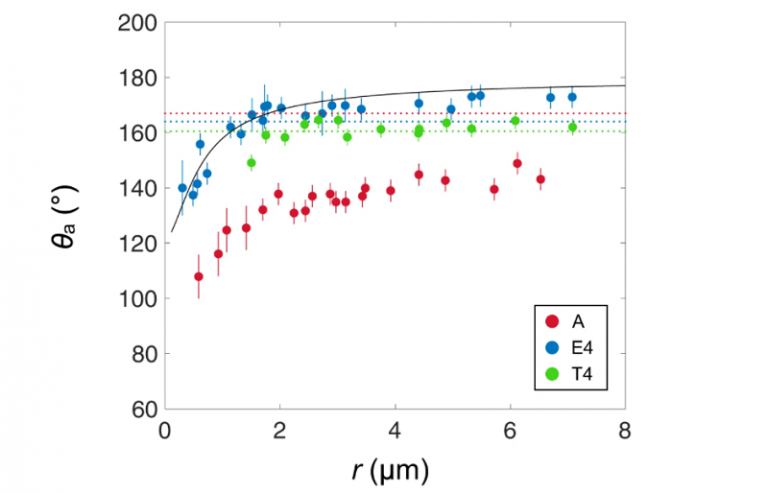EEE research on cutting condensation published in Nature Communications
17 June 2021
Researchers from the Department of Electronic and Electrical Engineering’s Photonic Innovations Lab and CNRS, École Polytechnique, Institut Polytechnique de Paris proposed a solution to reducing condensation.

EEE researchers, Martyna Michalska, Sophia Laney and Tao Li, studied a range of nanocone families to establish an anti-fogging mechanism to counteract condensation, that could prove revolutionary for industrial processes.
Water droplet condensation causes severe limitations to several industrial processes by posing a threat to equipment, enhancing corrosion of surfaces and promoting the spread of bacteria.
To resolve this, anti-fogging technologies that repel dew are highly sought after. Nature inspired structures, like the nanocone arrays found on the cicada wings, have been shown to exhibit dew-repellency and constitute a promising route to elicit special wetting properties at microscales.
Until now, a systematic examination on the impact of the nanocone geometry has been lacking. This research proposed an efficient and elegant solution to the condensation problem by exploring the area in depth.
On their research being published in the prestigious Nature Communications, Martyna Michalska and Sophia Laney from the Photonic Innovations Lab at UCL said:
“We are very glad to see our nanofabrication skills being put into use in such a high impactful work.
The research is a collaboration between the photonic innovations lab led by Prof Ioannis Papakonstantinou with Prof David Quéré’s group at CNRS, École Polytechnique, Institut Polytechnique de Paris.
Paper is available as Open Access:
Lecointre, P., Laney, S., Michalska, M. et al. Unique and universal dew-repellency of nanocones. Nat Commun 12, 3458 (2021).
 Close
Close

